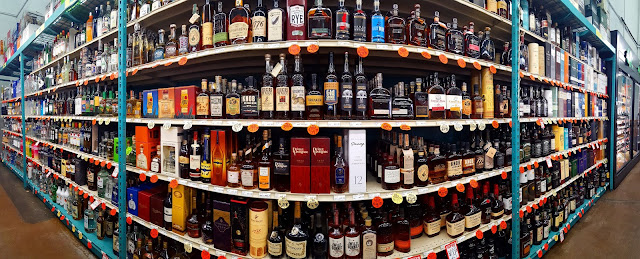Alcohol is the third leading cause of preventable death in the U.S. Despite the fact that some 88,000 Americans die of alcohol-related causes each year, the substance is not only legal it’s inexpensive to buy. A nominal amount of money can provide users with enough liquor, beer, or wine to become intoxicated, seven days a week. While your average American isn’t splurging every time they drink, cheap alcohol has the same effect as expensive “booze.”
Both state and federal government taxes alcoholic beverages of any kind, albeit the excise tax on spirits is significantly higher than beer or wine. Even still, a bottle of cheap vodka can be acquired for under $20 which begs the question: Given the addictive and deadly nature of alcohol, should the substance cost more?
Yes, some could argue that people who have an unhealthy relationship with alcohol will find a way to get drunk regardless of the price; and the alcohol industry may claim that making alcohol cost prohibitive impacts its profit margin unfairly. Both arguments are not without merit yet, there are still other good arguments that may top the previous claims. For instance, most adult drinkers form a relationship with alcohol before they are allowed to drink legally. Given that young people don’t have bottomless wallets, cheaper booze means more and more opens up the door for reckless drinking, i.e., binge drinking. Raising the price may not do much to curb peoples’ alcoholism, but it may prevent future cases; and therein lies the rub, the only way to find out is to raise prices.
The Cost of Alcohol
In the U.S., each state has the right to determine how to tax alcohol. The state with the highest excise tax and liquor tax rates is Washington ($33.54 per gallon), according to the Tax Foundation. The lowest prices are in Wyoming and New Hampshire which don’t use excise taxes on alcohol, relying instead on an ad-valorem (“according to value”) markups; people travel long distances to buy liquor in such states. Despite California being one of the most forward-thinking states, the excise tax is only $3.30 per gallon of spirits.
An estimated 16 million people in the United States have alcohol use disorder. You might find it hard to compare a little country like Scotland to the U.S., yet it turns out that Scots have a severe problem with alcohol. A 2016 National Health Survey shows that 1 in 4 people (26%) drink at hazardous or harmful levels (defined as drinking more than 14 units per week). One unit is 8 grams of alcohol, equal to a 25-milliliter shot of 40 percent liquor. In an effort to prevent dangerous drinking and prevent new cases of alcoholism, Scotland became the first western country to pass legislation exponentially increasing the price of alcohol, CNN reports. The measure sets a 50 pence (about 70 cents) minimum price per unit of alcohol. A bottle that previously cost £2.50 ($3.50) would now run at least £7.50 ($10.20).
“As a nation, we drink 40% more than the low-risk drinking guidelines of 14 units per week for men and women,” said Dr. Catherine Calderwood, Scotland’s chief medical officer. “That is where this new legislation comes in, and I am confident that over the first five years of its operation, minimum unit pricing will reduce the number of alcohol-specific deaths by hundreds, and hospital admissions by thousands.”
If the Scottish experiment bears fruit, it’s possible other western countries might take a harder stance on alcohol.
Alcohol Use Disorder Treatment
If you are struggling with alcohol, please contact Hope By The Sea. We can help you begin the process of recovery and provide you with the tools for achieving long-term recovery.


